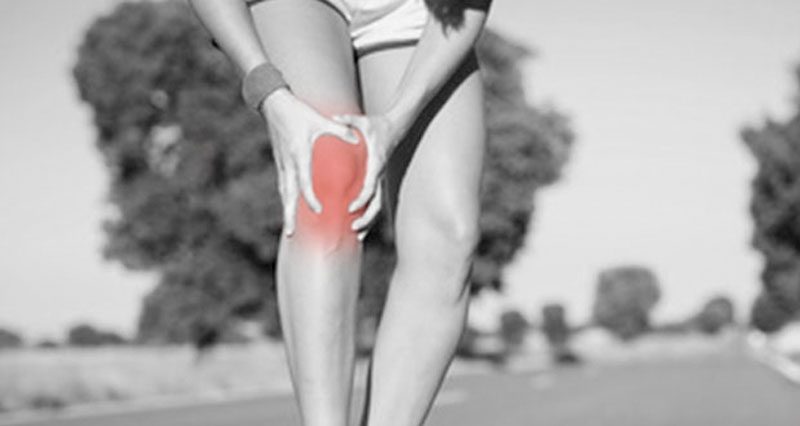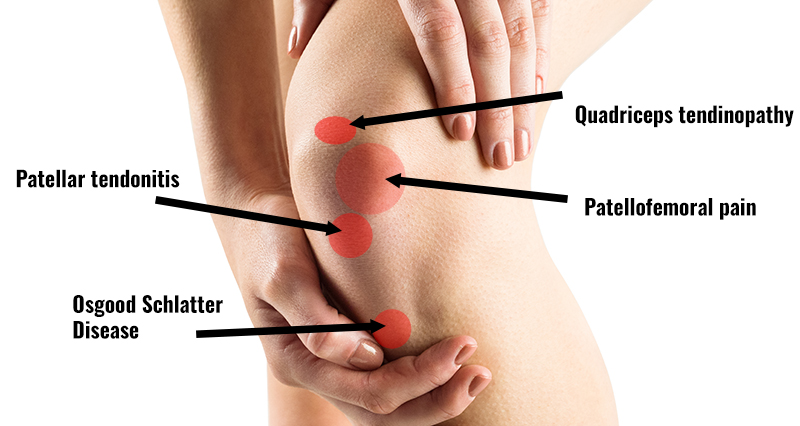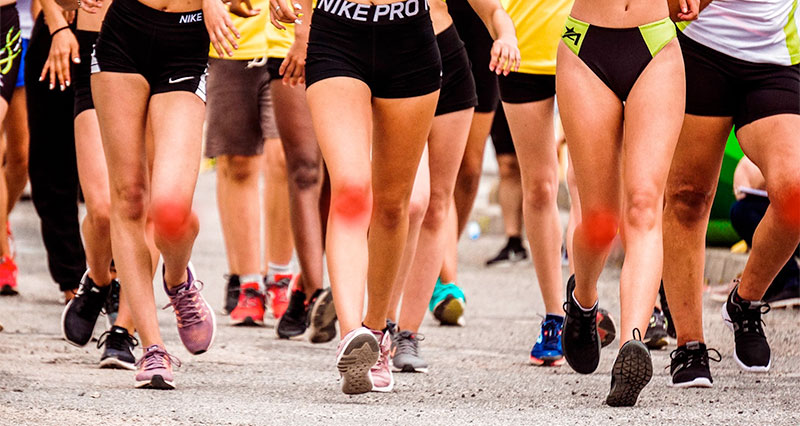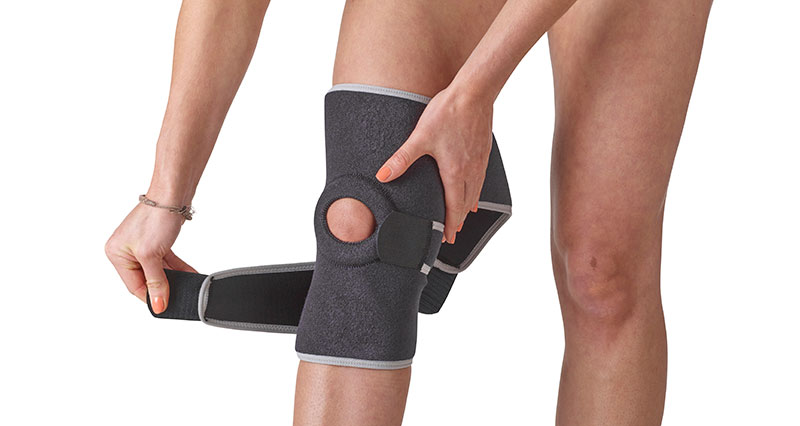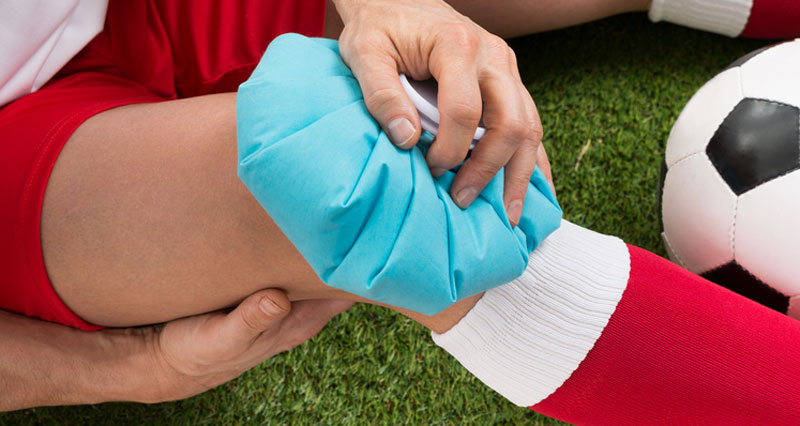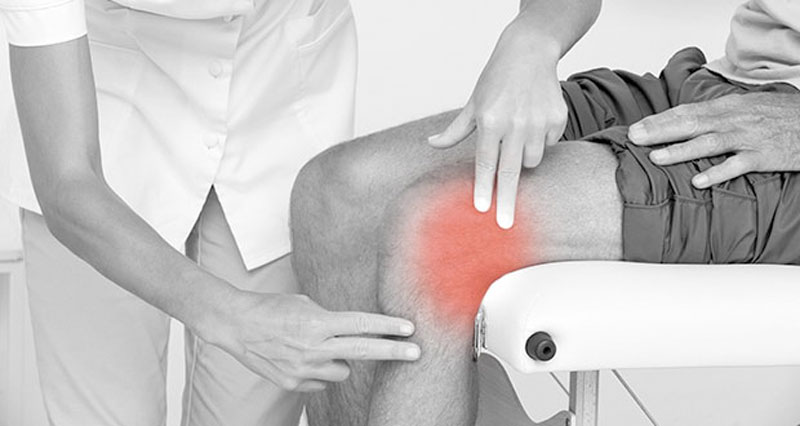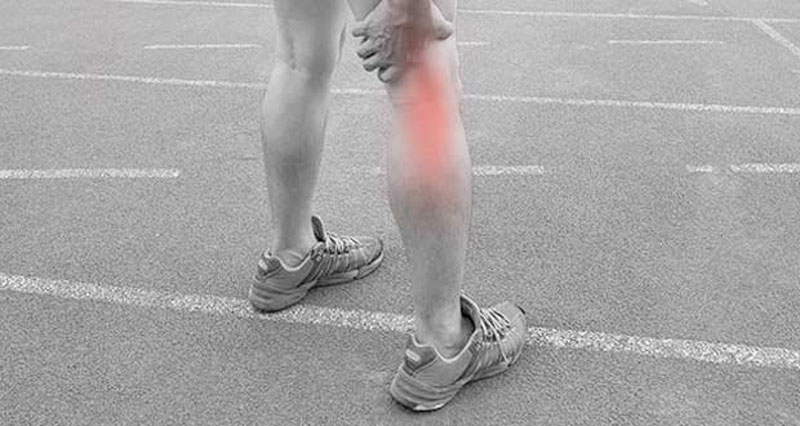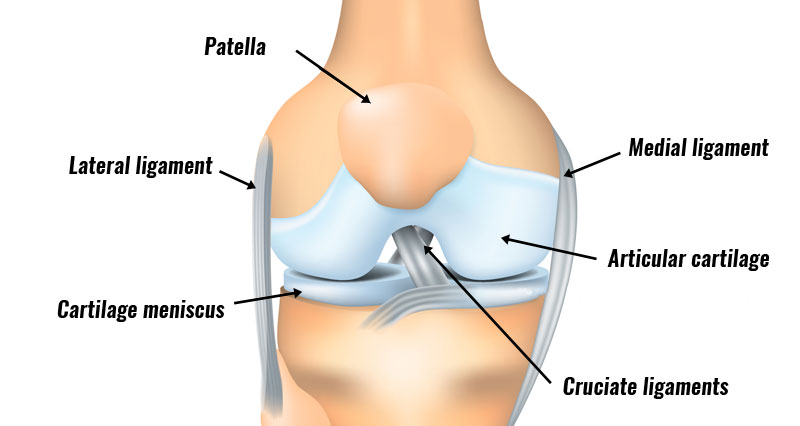Anterior knee pain is pain at the front of the knee. Common causes include patellofemoral pain, Patella tendonitis, Osgood Schlatter disease, bursitis and tendon ruptures.
Medically reviewed by Dr Chaminda Goonetilleke, 14th Dec. 2021
Most common causes by location
Gradual onset anterior knee pain
Most causes of pain at the front of the knee occur gradually over time through overuse. You will most likely not be aware of a specific incident which caused your injury:
Patellofemoral pain syndrome
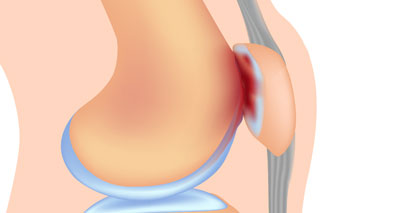
Patellofemoral pain syndrome is a generic term describing anterior knee pain caused by the patella rubbing on the bone underneath. Symptoms include:
- Tenderness on the inside of the patella.
- Swelling may sometimes occur.
- Pain may get worse when walking up and down hills or after long periods of sitting.
- More on Patellofemoral pain syndrome
Jumper’s Knee/Patella tendinopathy

Jumper’s knee or patellar tendinopathy is an overuse injury that results in pain at the front of the knee, specifically at the bottom of the kneecap. Overuse from running or jumping can cause degenerative changes in the patella tendon.
- The bottom of the patella feels very tender.
- The patella tendon may seem larger than the other knee.
- It is likely to ache and feel stiff after exercise.
- If neglected this injury can cause it to become worse and a chronic problem.
- More on Jumper’s knee
Osgood Schlatter’s disease
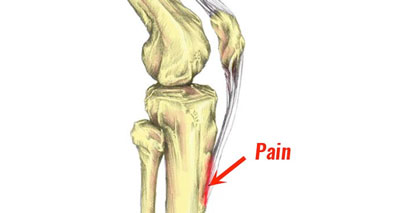
Osgood Schlatter’s disease is a very common cause of anterior knee pain in children between the ages of 10 and 15 years old.
- Pain at the top of the shin (tibial tuberosity), just below the kneecap, is the main symptom that becomes swollen and inflamed.
- Symptoms will worsen with exercise and improve with rest.
It is something children will usually grow out of, but treatment and ‘management’ of this injury are essential.
- More on Osgood Schlatter Disease
Sinding-Larsen-Johansson lesion
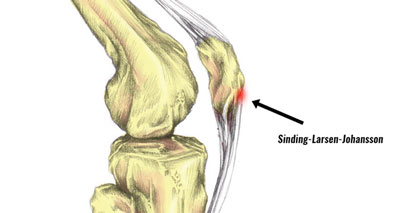
Sinding-Larsen-Johansson lesion (syndrome) also affects young athletes and children causing pain at the front of the knee, at the lowest point of the patella or kneecap.
- The bottom of the kneecap may feel tender and the pain will get worse during and after exercise.
- Symptoms are very similar to Jumper’s knee/Patellar tendonitis.
- More on Sinding-Larsen-Johansson
Chondromalacia patella
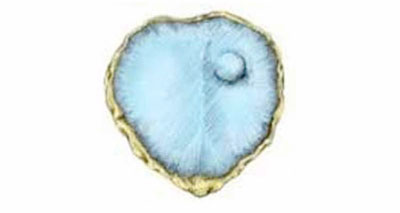
Chondromalacia patella (CMP) involves damage to the articular cartilage under the patella. Symptoms are similar to patellofemoral pain at the front of the knee.
- The kneecap rubs on the bone underneath causing swelling and pain.
- Pain can worsen when walking downstairs or after sitting for long periods.
- A grinding or clicking feeling when moving the knee.
- More on Chondromalacia patella
Housemaid’s knee & knee bursitis
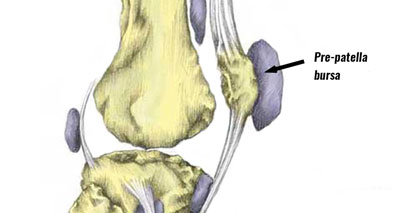
Housemaid’s knee, also known as prepatellar bursitis or knee bursitis, is a swelling of the bursa at the front of the knee. A bursa is a small sac of fluid whose function is to lubricate the movement between tendons and bone. Symptoms include:
- Pain and tenderness at the front of the kneecap.
- Local swelling in the form of a lump over the patella.
- Your kneecap may be warm to the touch.
- Kneeling will often be painful.
Infrapatellar bursitis occurs when the infrapatellar bursa below the kneecap becomes inflamed. Pain at the front of the knee and swelling are the main symptoms. The symptoms are similar to those of Jumper’s knee.
- More on knee bursitis.
Synovial plica
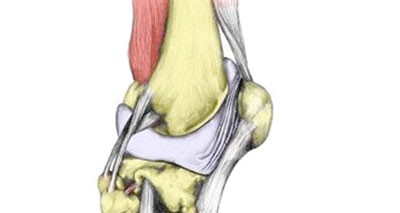
The synovial plica is a synovial fold along the inside of the kneecap. It causes pain and discomfort. It has similar sometimes to patellofemoral pain syndrome including:
- Sharp anterior knee pain, specifically at the front inside edge of the kneecap
- Pain may also be towards the back of the patella
- Sharp pain when squatting
- A synovial plica may sometimes feel like a thickened band under the inside of the kneecap
- More on Synovial plica
Patellofemoral instability
Patellofemoral instability can occur through a number of anatomical or genetic causes, or it can result from a previous patella dislocation injury. The injury usually involves the patient having a sensation of their kneecap ‘slipping away’ or feeling loose on a movement of the knee. The front of the knee may be painful and swollen.
- More on Patellofemoral instability
Quadriceps tendinopathy
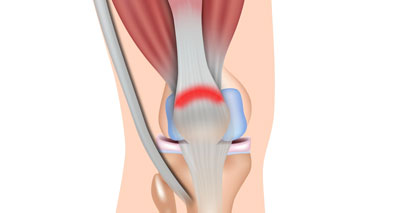
Overuse can lead to degenerative changes in the tendon of the quadriceps muscle, at the top of the patella. Symptoms include:
- Pain around the top of the kneecap, increasing during and after exercise
- Performing a deep squat is painful
- Tenderness pressing in at the top of the knee
- More on Quadriceps tendinopathy
Fat pad impingement
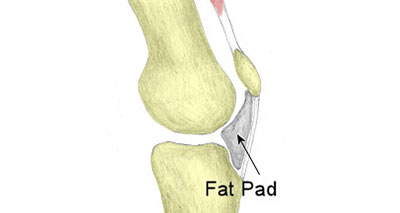
The infrapatellar fat pad (Hoffa’s pad) is soft tissue under the kneecap. It becomes impinged, often from direct impact trapping the pad between the patella and femur (thigh bone). Symptoms include:
- Tenderness at the bottom and under the kneecap
- Swelling
- Patella protrudes or tilts outwards
- More on Fat pad impingement
Sudden onset (acute) anterior knee pain
The following are causes of sudden onset or acute pain at the front of the knee:
Patella tendon rupture
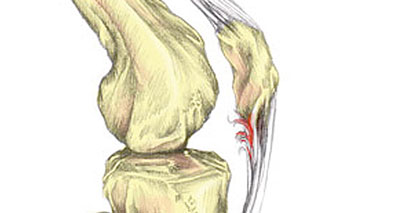
This is a tear of the patella tendon (patella ligament) which connects the kneecap (patella) to the front of the shin. Symptoms consist of:
- Severe pain
- An audible pop at the time of injury
- Swelling, particularly at the bottom of the patella
- Weight-bearing or straightening the leg is probably impossible
- More on Patella tendon rupture
Other causes of anterior knee pain
Other causes of pain at the front of the kneecap to consider include:
- Pain referred from the hip or lumbar spine.
- Osteochondritis dissecans.
- Slipped capital femoral epiphysis.
- Tumours (especially in young athletes).
Knee rehabilitation & exercises
We have the following rehabilitation programs available:
